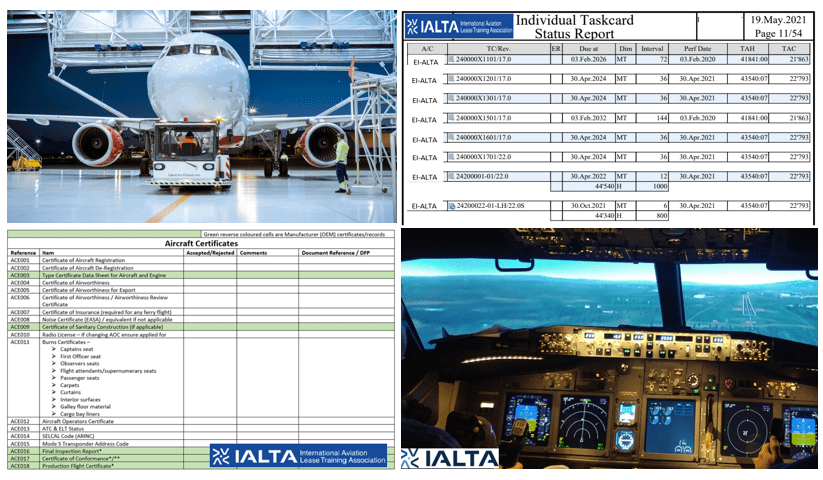Whether you are performing a technical records review on behalf of a lessor/owner or an airline
redelivering or accepting delivery of a previously leased aircraft or working as a CAMO engineer
reviewing a set of records on an aircraft coming out of storage, the review of the Airworthiness
Directives (AD’s) for compliance, the Hard Time (HT) component lists and the Last-Done-Next-
Due (LDND) are all an integral part of your role.
When it comes to the LDND report the technical personnel will perform a line-by-line review of
each task to see when they were last done and when they are next due.
The report will contain the following;
*Operator Specific Maintenance Tasks
*System Maintenance Tasks
*Zonal Maintenance Tasks
*Structure Maintenance Tasks
*Certification Maintenance Requirements
*Soft Life Items Listing
*Optionally – Structural repairs requiring repeat inspections
Other areas of consideration that need to be taken into account during the LDND review are;
1. OOPS – Out of Phase requirement, this is when a task that does not fall into a scheduled
maintenance activity (an A Check/HMV/C Check).
2. SRT – Single Running Tasks are also commonly included within the LDND and similar to
OOP’s they can also be provided in a separate document depending on the operator records.
3. SSI’s – Supplemental Structural Inspections; they are as their name suggests supplemental
and typically exist for older aircraft or “aging aircraft”, SSIs are important for continued operation
of an aircraft as they are designed to detect in a timely manner any potential issues such as
fatigue at certain locations on the aircraft where there may not have been any issues yet.
4. CMR – Certificate of Maintenance Requirement, the task is a requirement from the design
certification of the airplane as an operating limitation of the type certificate. On the review, you will
compare the CMR intervals and thresholds from the provided report to ensure they are correct.
Check out our full range of Technical Records courses and more HERE
Continue to follow us on LinkedIn for our weekly posts. Remember also that our blog page on
the website holds a comprehensive database of information that all aviation personnel will enjoy.
